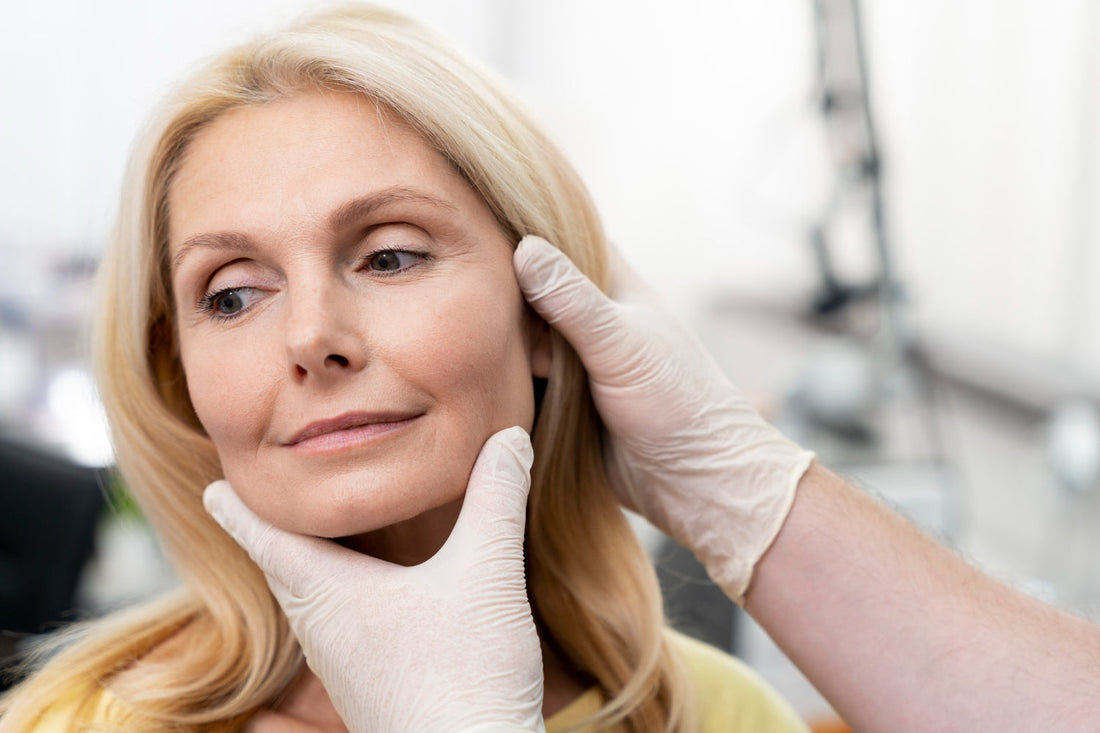
When Skin Tightening Causes Discomfort: Solutions
Share
Skin tightening has become a popular option for people looking to improve skin texture and firmness without surgery. It’s used to target sagging and fine lines, especially around the jawline, neck, and eyes. Whether it’s done with radiofrequency, ultrasound, or laser-based treatments, the procedure works by stimulating collagen, which can help restore a smoother, tighter appearance.
Even though it’s non-invasive, some people may feel discomfort after the treatment. That doesn’t mean something went wrong, but it does mean your skin is responding to the process. Every person has different reactions, and understanding those can help you feel more prepared. If skin tightening in Henderson is on your list or you’ve already had it done and are feeling some irritation, we’ll go over what you can do next.
Understanding Why Discomfort Happens
It’s normal to feel a little anxious when your skin doesn’t feel the way you expected after a cosmetic treatment. Discomfort after skin tightening doesn’t always mean there’s a problem. It’s often a sign that your skin is working hard to respond and heal. The key is to figure out whether what you’re experiencing is expected or if it needs extra attention.
Here are a few common reasons why discomfort might show up after skin tightening:
- Skin sensitivity: Everyone’s skin reacts differently. Some might feel mild warmth or tightness, while others might notice tenderness or redness. This can be especially true if you’ve had reactions to skin products in the past.
- Type of treatment used: Different methods reach different depths of the skin. Treatments that target deeper layers tend to cause more noticeable sensations afterward.
- Lack of skin prep: Skin that hasn't been prepped or hydrated well before a session may react more strongly.
- Environmental exposure: Sun exposure right before or after treatment can make skin more reactive.
- Improper aftercare: Not following the right post-treatment instructions can lead to dryness, itching, or even burning.
Discomfort that fades over a few days typically doesn’t need medical help. A little redness or warmth is often expected, especially right after the appointment. But sharp pain, blistering, or prolonged swelling may be reasons to check in with a professional. Everyone’s skin has its own way of settling, so paying attention to what feels normal for you is helpful.
One woman in Henderson shared that she felt a strong pull near her jawline for two days after her first treatment. After her provider explained that the area had less fat and was firmer to begin with, it made sense why she noticed more tightness there. That reassurance helped her stick to the hydration routine and cooling products instead of worrying something was wrong.
Immediate Solutions For Post-Treatment Discomfort
If your skin feels sore or looks a bit inflamed after treatment, there are a few things you can do right away to ease the response. Often, the discomfort is manageable with gentle care. The goal is to support healing without interrupting the treatment’s effect.
Here are some quick relief options:
1. Use a cold compress
Apply a soft, damp cloth or wrapped ice pack for 5 to 10 minutes. This helps reduce redness and cool any heat on the skin.
2. Choose fragrance-free moisturizers
Look for creams that focus on hydration without strong active ingredients. Aloe or ceramide-based moisturizers can provide comfort without irritation.
3. Stick with clean, minimal skincare
Skip your usual active serums or exfoliants for a few days. Focus on hydration and barrier repair.
4. Take over-the-counter pain relievers
Mild anti-inflammatory pain relief, like ibuprofen, may take the edge off if you’re feeling sore.
5. Keep your head elevated when resting
If there’s swelling, sleeping with an extra pillow can help fluids drain more evenly.
Let your skin breathe and avoid layering too many products. Makeup can wait a day or two to give your skin time to calm down. If you ever feel unsure, go ahead and check in with a provider who understands the treatment you had. They’ll be able to tell if what you’re feeling is part of the course or worth a closer look.
Long-Term Strategies To Minimize Discomfort
Taking the right steps before and after tightening treatments can significantly reduce discomfort. Getting your skin ready and giving it proper care post-treatment is much like following a plan for a successful game. It involves knowing how to best protect and nurture your skin to ensure a smooth journey.
Consider these long-term strategies:
- Pre-Treatment Skincare Routine: A few weeks before your scheduled treatment, simplify your skincare routine. Use gentle cleansers and increase hydration with moisturizers that support the skin barrier. Cut back on harsh exfoliants and retinoids that might make your skin more sensitive leading up to the procedure.
- Sun Protection: Wear sunscreen daily and avoid sunburn or excessive tanning before your treatment. Sun exposure can increase the risk of irritation.
- Hydration: Drink plenty of water before and after your treatment to keep your skin hydrated from the inside out. It helps your skin respond better and heal faster.
- Consultation: Have a detailed discussion with your aesthetician to know exactly what to expect. Understanding what sensations are normal will put your mind at ease.
- Follow-up Care: Adhere strictly to the post-treatment instructions. This often means keeping your skin clean, moisturized, and protected from the sun.
Keeping these strategies in mind ensures not just comfort but also maximizes the effectiveness of your treatment.
When To Seek Professional Advice
While some discomfort after tightening treatments is par for the course, there are times when seeking professional advice is wise. Knowing when something is normal versus when it requires more attention is important.
If you encounter any of these signs, it might be time to consult:
- Prolonged redness or swelling lasting more than a week
- Severe pain or skin that feels hot to the touch
- Blistering or significant peeling
- Signs of infection, such as pus or fever
These indicators could mean that your skin is struggling to heal or reacting unexpectedly. A skilled professional can offer guidance and care for these situations, ensuring safety and peace of mind. Remember that feeling uncertain is a valid reason to get in touch. Professionals are there to help you through each step of the process when it comes to skin tightening in Henderson.
Finding Comfort In Your Skin Care Journey
Embracing a skin treatment journey means acknowledging a process that's unique to you. As with any journey, moments of discomfort can happen. Understanding why these occur and how to address them can make all the difference in having an empowering experience.
Taking proactive steps, like paying close attention to your skincare routine and seeking timely advice, helps in nurturing not just your skin but your confidence too. Ultimately, making well-informed decisions leads to a healthier, more radiant appearance, allowing you to enjoy the benefits of skin tightening to the fullest.
With these tips, transforming your skin into a refreshed and glowing version of itself is within reach. If you’re considering skin tightening in Henderson, Abrams Aesthetics offers expert care to guide you through each step. For more details about how we can help enhance your skin's appearance and address any concerns, explore our treatments designed to rejuvenate and tighten.
